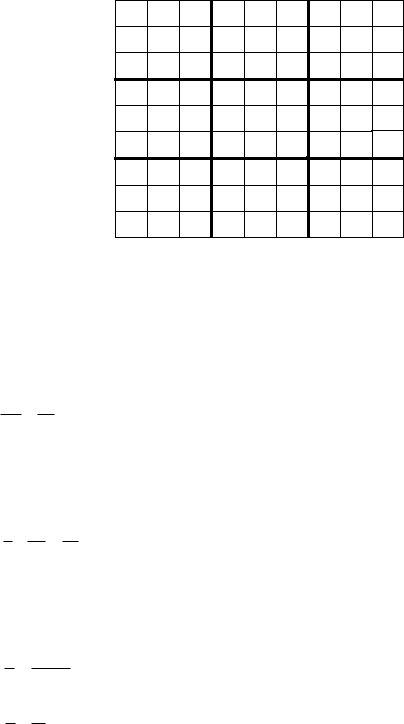Merging the logical allure of Sudoku with the rigorous demands of algebra, the Solving Linear Equations Sudoku form provides a compelling twist on traditional math exercises. Participants are tasked with solving 27 distinct linear equations, which might include finding values for variables amidst operations such as addition, subtraction, multiplication, division, and dealing with negative numbers. These equations range from simple, straightforward calculations to more complex problems that require a deeper understanding of algebraic principles. Upon solving these equations on a separate sheet, learners need to strategically place their answers in the designated boxes on the form. This activity not only reinforces algebraic skills but also enhances problem-solving and logical thinking, as the placement of each answer affects the overall solution to the Sudoku puzzle. With equations that vary in difficulty and require application of different algebraic concepts, this innovative form serves as an excellent educational tool, making the process of learning and practicing algebra engaging and enjoyable. The goal is to fill in all the boxes correctly, solving both the linear equations and completing the puzzle, which offers a satisfying challenge to both beginners and seasoned math enthusiasts alike.
| Question | Answer |
|---|---|
| Form Name | Solving Linear Equations Sudoku Form |
| Form Length | 2 pages |
| Fillable? | Yes |
| Fillable fields | 84 |
| Avg. time to fill out | 17 min 18 sec |
| Other names | solving linear equations sudoku, solving equation sudoku form print, linear equation sudoku, linear sudoku form printable |

Name: ______________________________ |
Date: _________________ Per.: ______ |
Solving Linear Equations Sudoku
Solve each equation on a separate sheet of paper. Place the answers in the appropriate box. Once you have completed the 27 problems, fill in the remaining boxes.
A B C D E F G H I
J
K
L
M
N
O
P
Q
R
AJ
AM
AO
AQ
AR
BJ
BO
CL
CP
DJ
DK
DN
DR
−9 = x − 14
−2x − 13 = −3x − 5
4x − 2x = 18
3m + 4.5m = 15
2w = 30
16 80
−4(x + 6) = −40
7m − 3m − 6 = 6
2+ 3k = 71 3 4 12
8y − (2y − 3) = 9
4n − 7 = 5 − 2n
2= 14 n n + 30
4= m 6 9
6(y + 3) = 24
EO |
w + 1 |
= |
25 |
|
||||||
|
|
|
|
|
||||||
|
4 |
|
|
|
50 |
|
||||
FJ |
|
3x − 7 = 20 |
||||||||
FN |
|
c |
− 4 = −3 |
|||||||
5 |
||||||||||
|
|
|
|
|
|
|
|
|||
FQ |
|
3x − 2 = 16 |
||||||||
FR |
9 = −4y + 6y − 5 |
|||||||||
GL |
−6x + 2x = −36 |
|||||||||
GP |
|
6 − 3(2k − 4) = −18 |
||||||||
HM |
|
−0.04x + 1.32 = 1.08 |
||||||||
HR |
|
4x − 3 = x + 9 |
||||||||
|
|
|
⎛ 1 |
|
⎞ |
|||||
IJ |
|
4⎜ |
|
|
+ y ⎟ = 5 |
|||||
|
|
|||||||||
|
|
|
⎝ 4 |
|
⎠ |
|||||
IK |
|
6x = 24 |
||||||||
IM |
|
3x + 4 = x + 18 |
||||||||
IO |
|
|
0.5t − 3t + 5 = 0 |
|||||||
IR |
|
|
−(z + 5) = −14 |
|||||||
EM |
−2g − 5 = −11 |